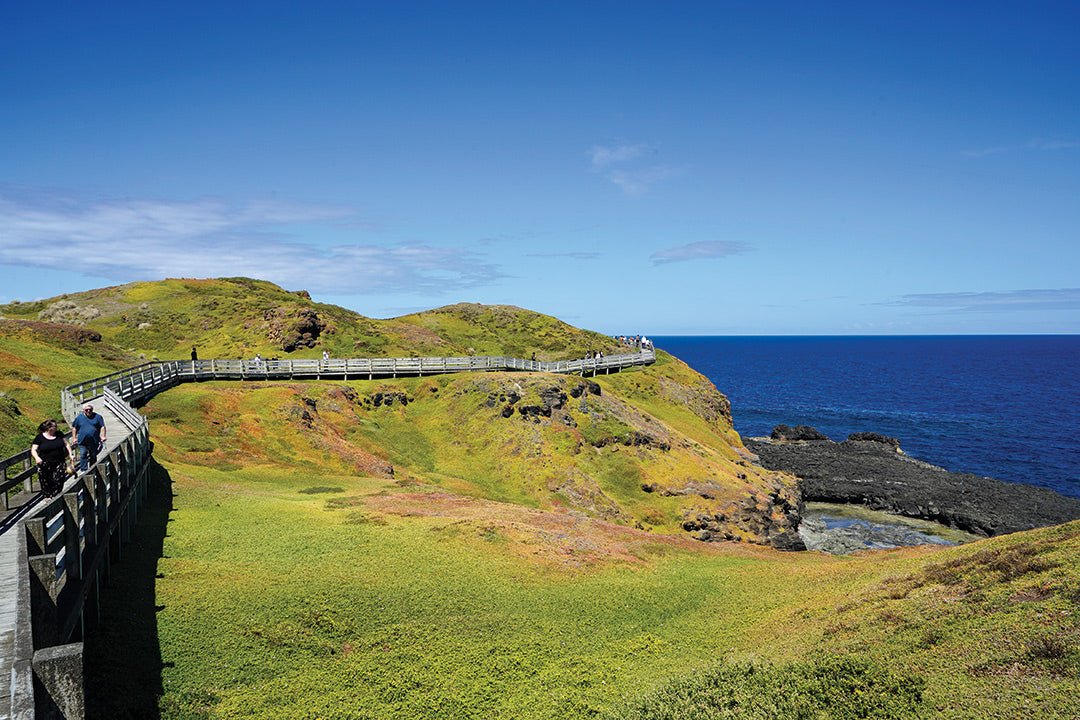

Come for the penguins, stay for the rugged coastlines, pristine beaches and laid-back island life — Victoria’s Phillip Island has it all.
“How much further? I can’t see any shipwreck,” whined my 10-year-old daughter. Her patience was wearing thin as we threaded through thatches of grass onto a windswept bluff, the sea breeze turning her hoodie into a windsock. We reached the crest and peered over the clifftop, gazing east along the rocky shoreline, and there it was. The unmistakable silhouette of the SS Speke shipwreck, the vessel’s rusted skeleton pitched skyward in a defiant salute to Bass Strait.
I’ve visited Phillip Island — one of Victoria’s most beloved coastal playgrounds — many times, but I’d never before glimpsed the Speke, a steel cargo ship run aground in 1906. That there are no signposts to this maritime relic, and little — if any — reference to it in the tourist literature, makes the Speke an altogether thrilling side trip. The wreck, only accessible at low tide, can be reached via a 1km unmarked trail from Kitty Miller Bay. The final section is a short knee-jarring descent down a rutted dirt track, but we were soon rock-hopping over tidal pools and clambering up onto the exposed hull to peer through portholes and poke around rivets on the Speke’s decaying carcass.
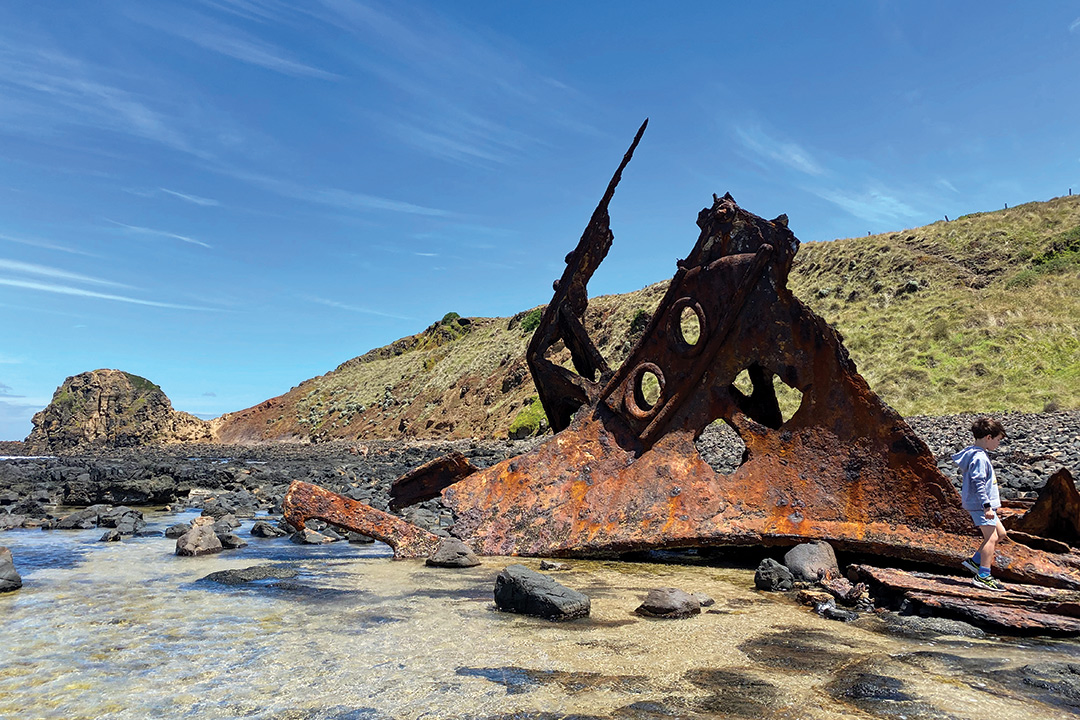 SS Speke shipwreck, Kitty Miller Bay
SS Speke shipwreck, Kitty Miller Bay
Phillip Island (Millowl) is one of the few Australian islands you can drive your car — and caravan — to and, as a 1.5-hour drive from Melbourne, it is a popular coastal getaway. Travellers have been drawn to ‘The Island’ for generations, lured by the little penguins, which have become the destination’s pinup attraction. But beyond the nightly parade of pint-sized birds in their tuxedoed finery, Phillip Island — the traditional land of the Bunurong People — is full of wondrous surprises. The island, dangling like a weedy sea dragon at the entrance to Western Port Bay, is home to globally significant wetlands, dramatic sea cliffs, seals, koalas, pro surfing competitions and the Australian Motorcycle Grand Prix.
Creatures great and small
For many visitors, the animal encounters begin before they even set foot on the island. The gateway town of San Remo is famous for its free midday pelican feeding session at the San Remo Fisherman’s Co-op. We joined the throng of people on the shore as fistfuls of fish guts were flung into the bills of a squadron of feisty pelicans. It was quite the spectacle. Afterwards, we ordered our own seafood lunch at the co-op, tucking into a parcel of fish and chips — as fresh as they get — on the lawn patrolled by squawking seagulls.
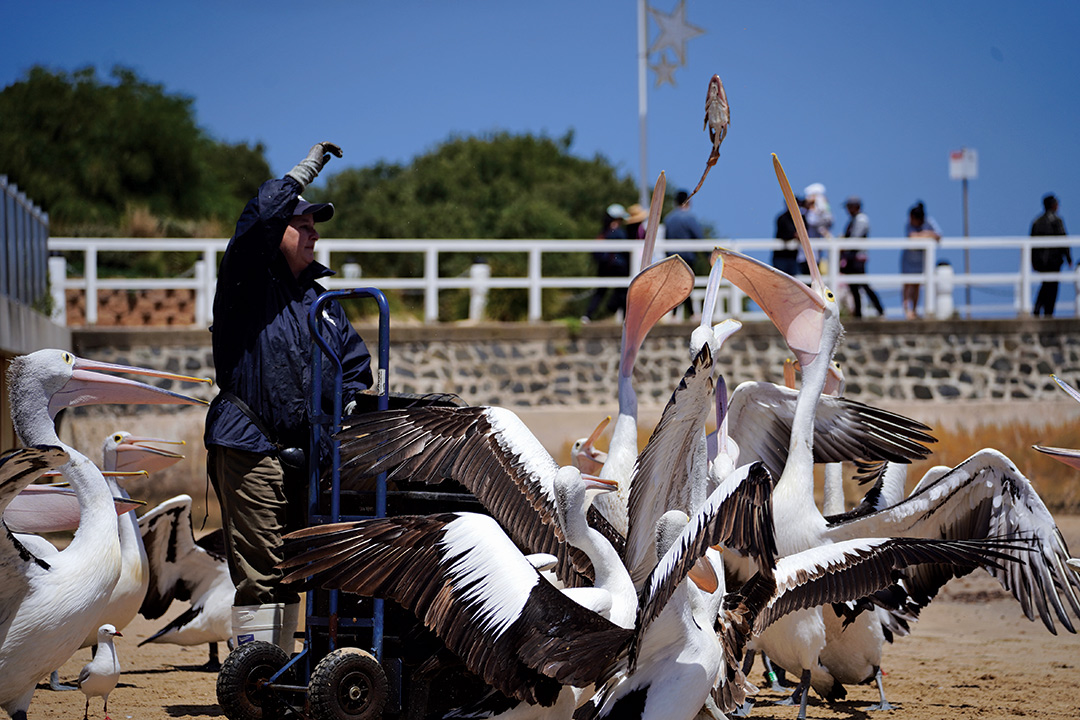 Pelican feeding at the San Remo Fisherman’s Co-op
Pelican feeding at the San Remo Fisherman’s Co-op
Crossing the bridge back over to the island, we took a righthand turn and headed north to Conservation Hill and Rhyll Inlet, a Ramsar-listed wetland and summer haven for migrating birds. We took the short 500-metre return boardwalk through mangroves and mudflats to the lookout, keeping eyes peeled for spoonbills, oystercatchers, egrets and myriad other birdlife, and sending crabs scurrying into their burrows. Back on the main drag (Phillip Island Road), we stopped by the Koala Conservation Reserve, a not-for-profit refuge for the island’s resident koala population. Curiously, koalas are not endemic to the island and were only introduced in the 1870s. Their numbers exploded over the subsequent decades, before rapidly declining, thanks to habitat loss, car strike, disease and introduced predators. We learned how the reserve has created a green wedge for the remnant koala population as well as providing a haven for vulnerable bush stone-curlews, which are at risk of extinction in Victoria. During a treetop walk through the manna gums we spotted a wallaby grazing on the forest floor and several koalas dozing in the branches, as well as a frisky mum and joey on the move. Before we left, the kids stopped by the planting station, poking native seeds into small take-away planter pots to encourage habitat restoration at home.
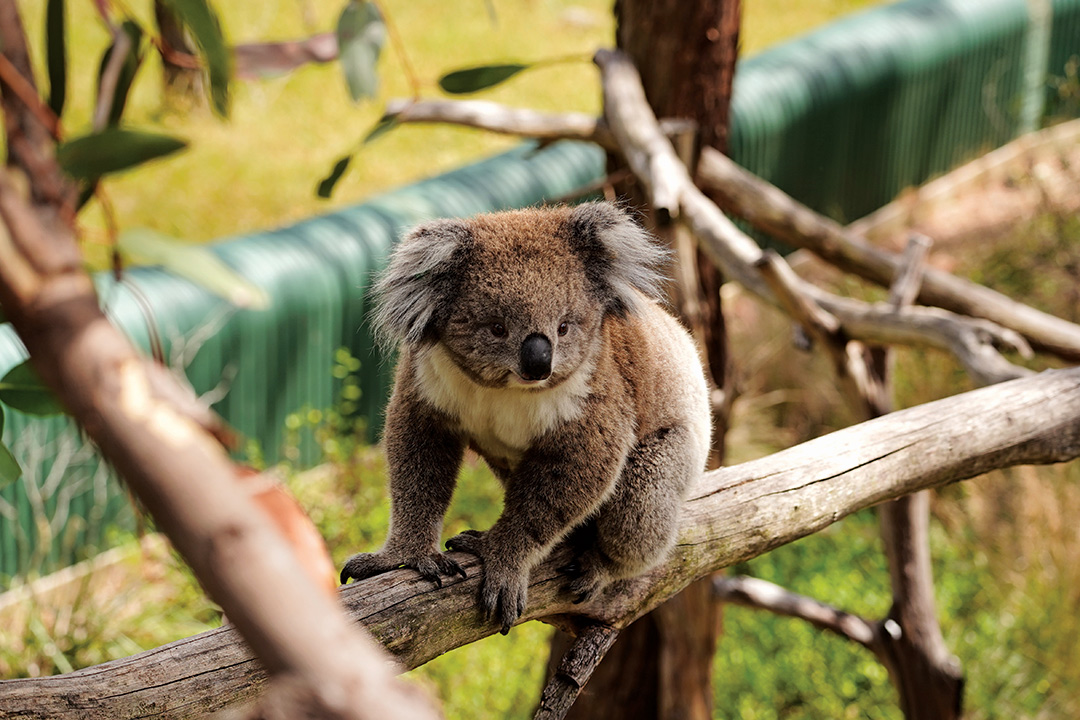 Get up close and personal with the native wildlife at the Koala Reserve
Get up close and personal with the native wildlife at the Koala Reserve
Peekaboo penguins
Our peak local wildlife moment came at the Penguin Parade, home to the world’s largest colony of little penguins — numbering about 32,000. As we made our way to Summerland Beach, dodging fat Cape Barren geese on the roadside, there was a palpable sense of excitement in the back seat. We nabbed a popular spot right on the sand, huddling under a blanket as the sun slunk behind the dunes, and waited for the action to begin. Anticipation was at fever pitch, and then suddenly a small clutch of little heads punctured the sea and a chess board of black and white figures spilled onto the beach. The penguins advanced in a platoon, waddling awkwardly like a bunch of drunken sailors with hands tied behind their backs. My three kids were transfixed. The only sound was from our feathered companions, marching purposefully in a chorus of coos, squeaks and squeals that accompanied us almost all the way back to the car park.
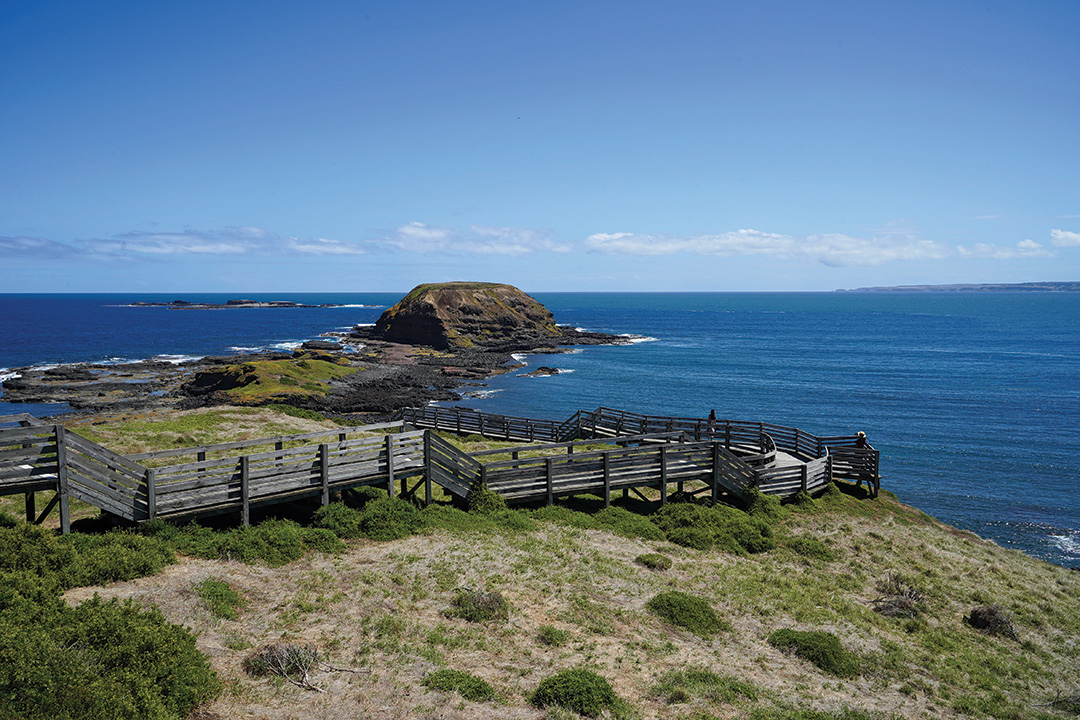 The Nobbies and Seal Rocks
The Nobbies and Seal Rocks
Coastal curios
Just around the corner from Summerland Beach at the westernmost tip of the island is The Nobbies, a wave-battered promontory of jagged sea cliffs, rock formations and islands, is home to Australia’s largest fur seal colony (about 30,000). We took the boardwalk tracing the clifftop past penguin boxes and hundreds of nesting crested terns to the blowhole and listened to the thunder of the sea as it spat an angry barrage fired from the depths of the Southern Ocean. We popped into Antarctic Journey at The Nobbies Centre for an audio-visual immersion into life on the frozen continent, before continuing our exploration of the island’s southern coastline.
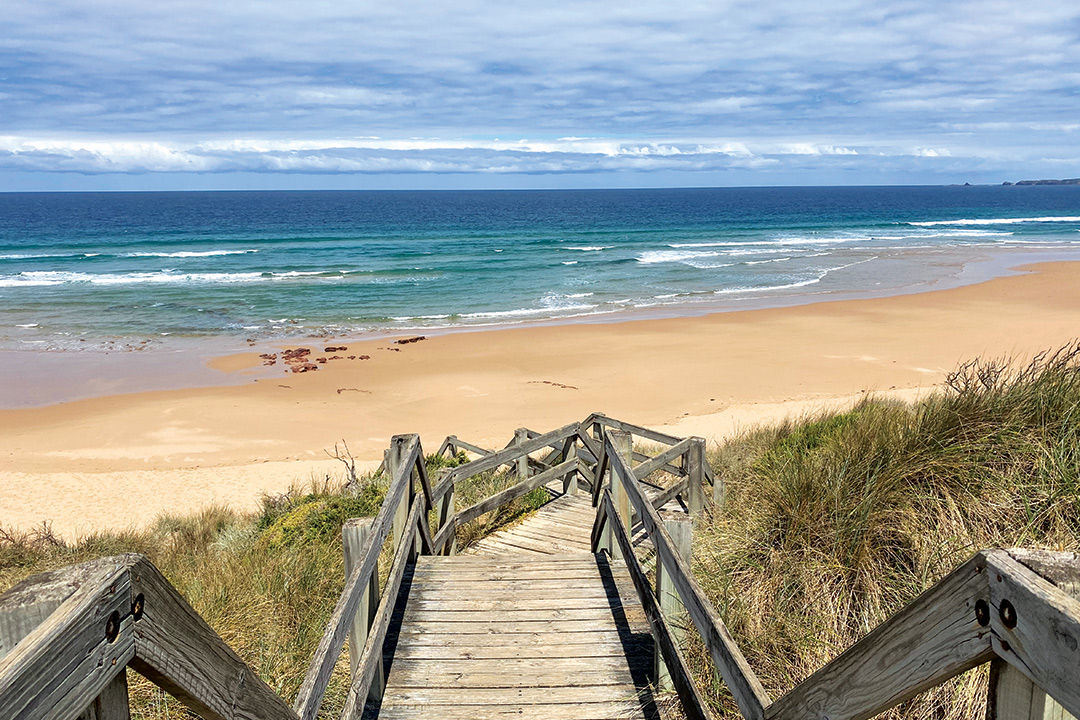 The Forrest Cave steps down to the beach
The Forrest Cave steps down to the beach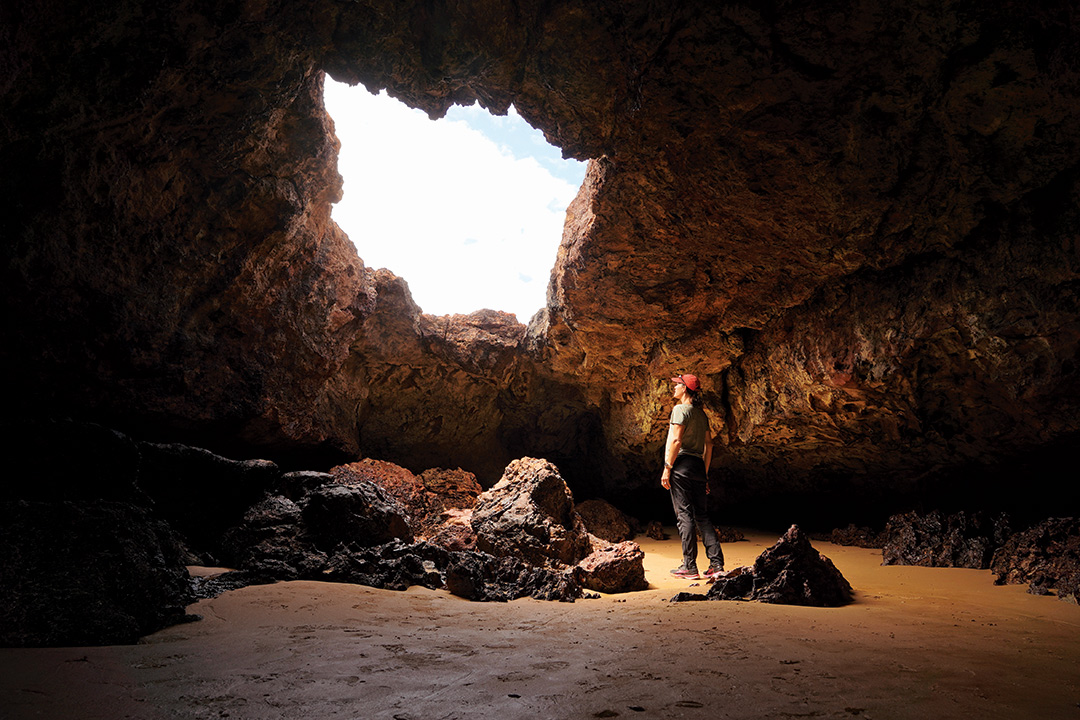 Forrest Caves
Forrest Caves
The next stop was the SS Speke shipwreck, then the lookout at Pyramid Rock, a volcano-shaped dome sculpted by pounding waves and wind. We checked out the swell at Smiths Beach, a favourite local haunt, then pressed on to Forrest Caves, a sunlit chamber on the beach carved out of hardened volcanic ash and accessible only at low tide. We left our run a little late and the kids squealed as the turning tide nipped at their heels as we timed our run into the sea cavern, dim and dripping. We rounded out our adventures at Cape Woolamai, at the island’s easternmost tip, and took the beach and clifftop walking track to The Pinnacles rock stacks. The headland is home to half a million short-tailed shearwaters, but during the day our only company was the surfers and snakes (the copperhead is the only species on the island, and we saw a few).
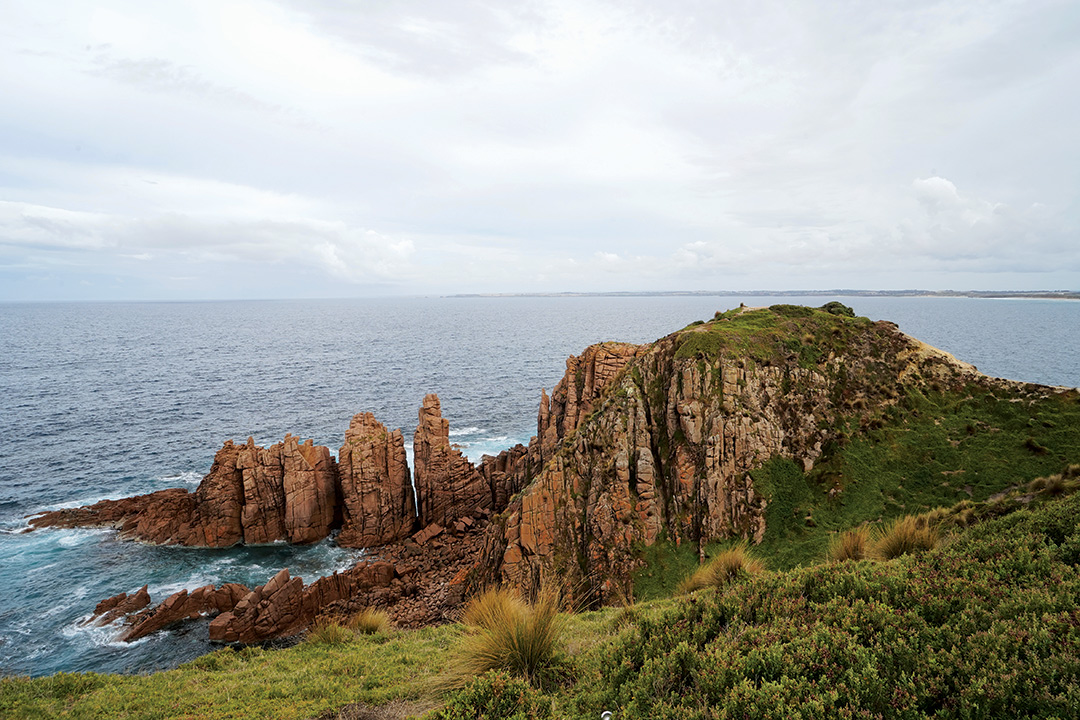 The Pinnacles at Cape Woolamai
The Pinnacles at Cape Woolamai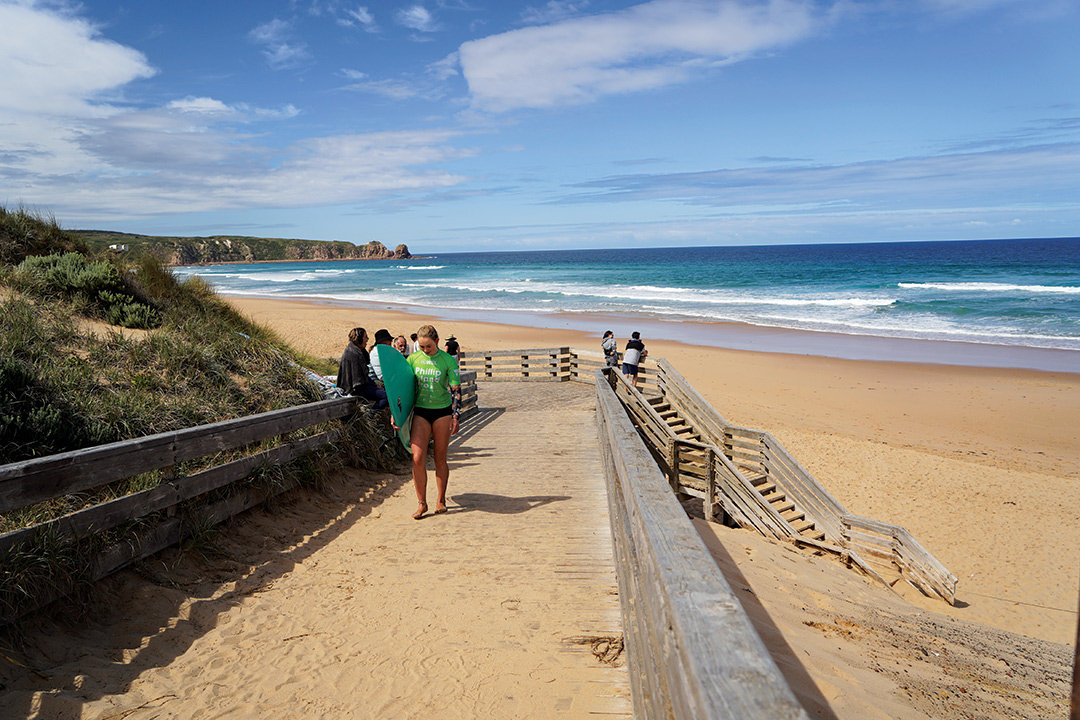 Cape Woolamai surf beach
Cape Woolamai surf beach
Sea escapade
One morning, we rose early to explore Cape Woolamai from a different perspective — by sea kayak. We met Stewart Bathgate, owner of Pioneer Kayaking, at the beach off Cottosloe Avenue and got kitted out with a lifejacket and double kayak. Stewart is a local high school PE and outdoor education teacher with a tourism side-hustle, so we were in good hands. It was a glorious day; the tide was on our side and the kayak’s splash skirt kept our lower half mercifully dry. The two-hour paddle hugged the granite clifftops of Cape Woolamai, traversing the strait between the mainland and the island’s big toe. We spied cormorants, kept our eyes peeled for an elusive dolphin, but the highlight came when we paddled inside a sea cave, the water so topaz-blue we could have been in the Mediterranean. There was a delightful pitstop on a secluded beach before we made our way back.
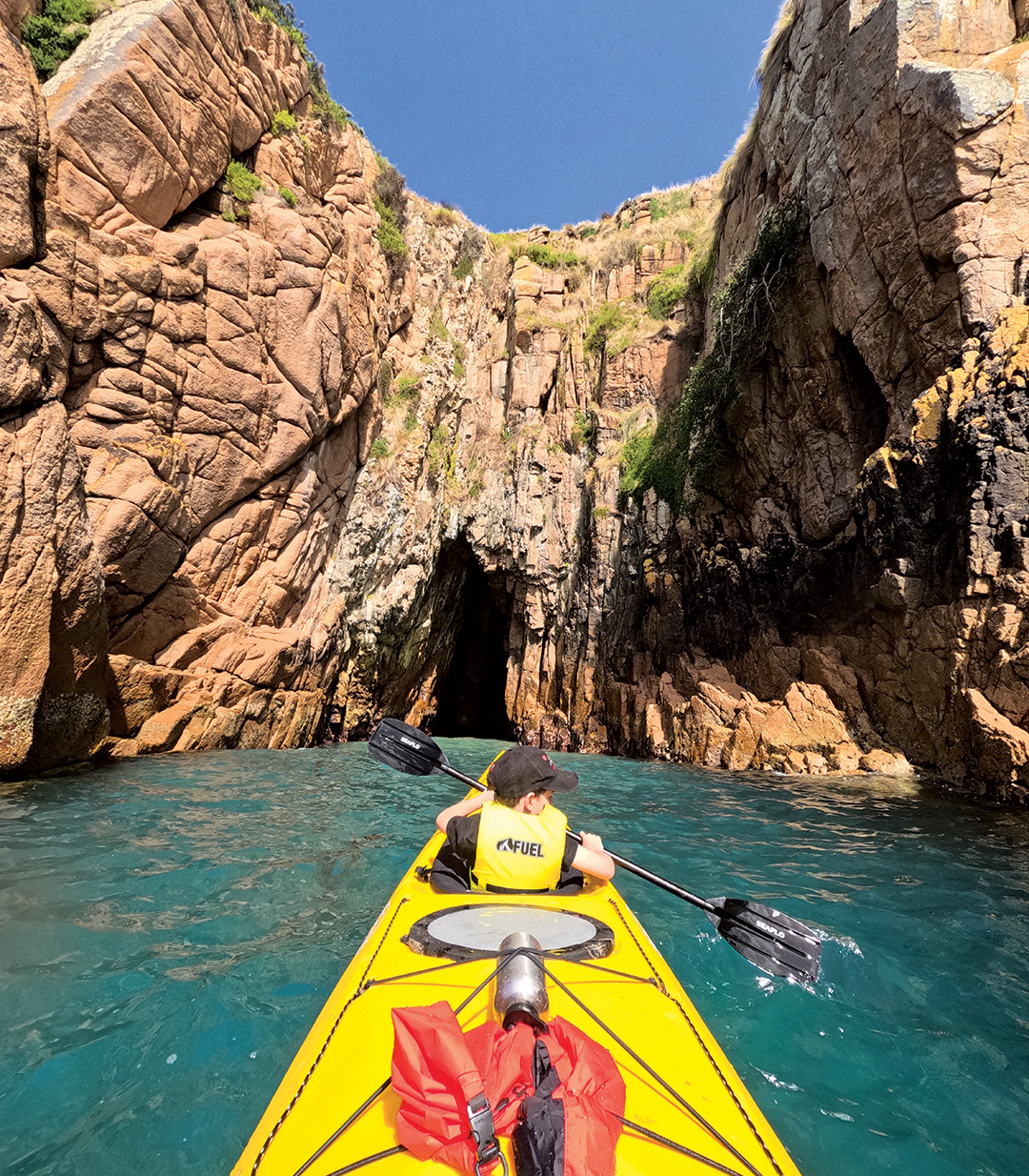 Exploring sea caves at Cape Woolamai with Pioneer Kayaking
Exploring sea caves at Cape Woolamai with Pioneer Kayaking
The remainder of our trip was spent beach hopping and exploring the tourist hub of Cowes and its tranquil foreshore and jetty. We spent a morning at historic Churchill Island, an island off an island that’s also accessible by car, and explored the preserved cottages and stables of the early-settler property. We indulged the kids in magic and silly illusions at A Maze’N Things fun park and unwound afterwards with a tasting paddle next door at Rusty Water Brewery. Our last pitstop was at the Phillip Island Chocolate Factory, where we let the kids choose a treat from 190 chocolatey goodies. That would keep them quiet on the journey back to the big smoke.
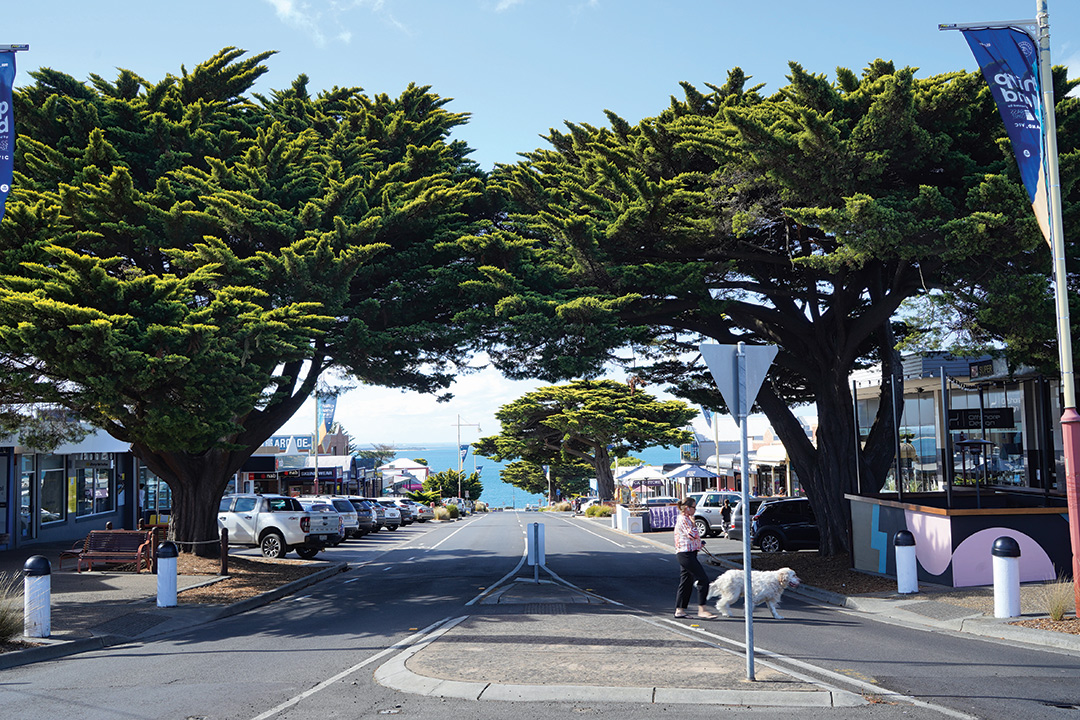 The main street of Cowes
The main street of Cowes Jumping off Cowes Jetty
Jumping off Cowes Jetty
Travel planner
Getting there
Phillip Island is 125km south of Melbourne via the South Gippsland and Bass highways. It’s a straightforward journey for caravanners, with a bridge from the mainland at the gateway village of San Remo.
Stay
There's a great choice of caravan parks on Phillip Island:
The Phillip Island Beachfront Holiday Park has a great spot on the foreshore overlooking Western Port Bay and is only a 10-minute stroll into the tourist hub of Cowes. Acquired by the NRMA group in late 2020, the park has undergone a major refurbishment in recent years and is centrally located to the island’s main attractions. While the park has a lot of permanent vans, there are more than 60 powered and unpowered tourist sites. The best picks are the 16 premium sites closest to the water — including site 186, the most prized of all with absolute water frontage. Be aware that some of the roads and sites are quite tight so be careful navigating through the park and check ahead if you have a large van. The amenities are large, modern and sparkling clean and the communal spaces are excellent. Think coffee machine in the camp kitchen and covered barbecue area with wood-fired pizza oven. There is also a large games room and e-bike hire on site. If you are travelling with non-caravanning friends and family, the new beachfront glamping safari tents are an absolute winner.
 NRMA Phillip Island Beachfront Holiday Park safari tent deck and bath
NRMA Phillip Island Beachfront Holiday Park safari tent deck and bath
There’s no pool at the NRMA Phillip Island, so if you fancy a swim try the Beach Park Tourist Caravan Park Phillip Island, almost next door.
If you have kids, the BIG4 Ingenia Holidays Phillip Island is a great option with all the requisite family-friendly facilities, but it’s a little further from the action at the entrance to the island.
Handy hints
For discount entry to the penguins, koalas and Churchill Island, book a Phillip Island 3 Parks Pass. Passes can be used over multiple days, so you can explore the island and your leisure. Visits to the famous Penguin Parade must be pre-booked as evenings regularly sell out, often well in advance during peak seasons (i.e., the summer months and long weekends and school holidays. The parade starts at sunset (be mindful that this can be anywhere between 5.15pm in winter and 9pm in high summer) and operates seven days a week, irrespective of the weather (the penguins march rail, hail or shine). There are viewing options for all budgets, ranging from standard general admission to VIP seating, a guided tour with a ranger and even underground viewing. If you have budget tickets, be sure to arrive at the visitor centre an hour before sunset when the viewing doors open to nab the best spots.
Head here for more information and travel inspiration.
Catherine Best is the author of Ultimate Caravan Trips: Australia. She was a guest of NRMA Phillip Island Beachfront Holiday Park and Destination Phillip Island.
THE NEXT STEP
If you want to learn the latest caravan news, find the most innovative new caravans and camping gear or get inspired to plan your next adventure to some of Australia's best getaway destinations, subscribe to our weekly newsletter. We promise to send you only the best content.
Related Articles:
Wilsons Promontory, Vic: The best things to see and do
Travel: Mornington Peninsula, Vic
Beauty beyond compare: The Yarra Valley and Dandenong Ranges







